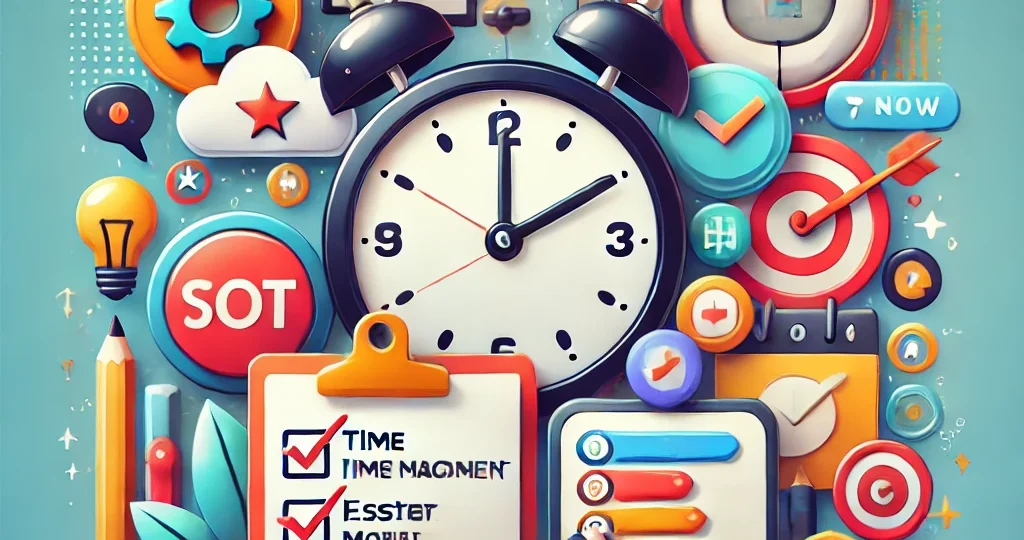Time is Money: Essential Tips for Managing Microtasks Efficiently
September 3, 2024 | by Jean

Understanding Microtasks in the Gig Economy
In the realm of the gig economy, where flexibility and autonomy reign supreme, understanding microtasks is essential for individuals seeking opportunities for earning money online. By comprehending the definition of microtasks, recognizing the various types available, and acknowledging the significance of efficient management, freelancers, students, stay-at-home parents, side hustlers, and digital nomads can optimize their productivity and income potential.
Definition of Microtasks
Microtasks, also known as crowdsourced tasks, are small, discrete tasks that can be completed quickly and independently. These tasks are typically part of larger projects and are often outsourced to a distributed workforce through online platforms. Examples of microtasks include data entry, image tagging, content moderation, and short surveys. By breaking down complex projects into manageable microtasks, companies can leverage the collective efforts of numerous individuals to achieve their objectives efficiently.
Types of Microtasks
Within the gig economy landscape, microtasks encompass a diverse range of activities that cater to different skill sets and interests. Some common types of microtasks include:
| Type of Microtask | Description |
|---|---|
| Data Entry | Entering and organizing data in spreadsheets, databases, or online forms. |
| Content Moderation | Reviewing and evaluating user-generated content for compliance with guidelines. |
| Online Surveys | Collecting feedback and opinions from participants through structured questionnaires. |
| Image Tagging | Describing and categorizing images to improve search engine results. |
| Virtual Assistant Tasks | Providing administrative support and assistance to individuals or businesses. |
| Transcription | Converting audio or video recordings into written text. |
Importance of Efficient Management
Efficient management of microtasks is paramount for maximizing productivity and earning potential in the gig economy. By establishing clear goals and priorities, creating a designated workspace, and setting realistic time limits, individuals can enhance their focus and effectiveness when tackling microtasks. Embracing strategies such as utilizing time management tools, implementing the Pomodoro Technique, and prioritizing tasks based on importance and urgency can further streamline workflow and optimize task completion.
In the fast-paced world of microtasking, maintaining a balance between focus, productivity, and personal well-being is key to long-term sustainability and success. By understanding the nuances of microtasks, identifying optimal work practices, and adapting to evolving demands, individuals can navigate the gig economy landscape with confidence and efficiency.
Setting Yourself Up for Success
In the realm of managing microtasks efficiently, laying a solid foundation is key to achieving productivity and success. By focusing on establishing clear goals and priorities, creating a dedicated workspace, and setting realistic time limits, individuals can optimize their workflow and maximize their output.
Establishing Goals and Priorities
To excel in managing microtasks, it’s essential to start by setting specific, achievable goals and outlining priorities. By defining what needs to be accomplished and the order of importance, individuals can maintain clarity and focus throughout their work. Prioritization allows for effective time management and ensures that critical tasks are completed promptly.
Creating a Dedicated Workspace
Creating a designated workspace for undertaking microtasks is vital for fostering a conducive working environment. A dedicated workspace helps separate work from personal life, promoting a professional mindset and minimizing distractions. Whether it’s a designated home office or a quiet corner, having a dedicated space can enhance concentration and productivity.
Setting Realistic Time Limits
In the realm of microtask management, time is of the essence. Setting realistic time limits for each task helps individuals stay on track and manage their workload effectively. By allocating specific time frames to different tasks, individuals can avoid procrastination and ensure that tasks are completed within the stipulated deadlines.
It’s crucial to utilize tools and techniques to help monitor time spent on tasks and analyze productivity patterns. By incorporating strategies such as time tracking and performance analysis, individuals can adapt their approaches for optimized performance. For more insights on enhancing efficiency in microtask management, consider exploring our article on monitoring progress and adapting.
Employing these foundational practices can significantly impact the efficiency and effectiveness of managing microtasks in the gig economy. By setting clear goals, cultivating a conducive workspace, and adhering to realistic time limits, individuals can embark on a productive journey towards mastering the art of microtask management.
Strategies for Efficient Task Management
When it comes to managing microtasks effectively in the gig economy, employing the right strategies can significantly enhance productivity and time management. Here are three key approaches to optimize your task management process: using time management tools, implementing the Pomodoro technique, and prioritizing tasks based on importance and urgency.
Using Time Management Tools
Time management tools are essential for freelancers and gig workers to streamline their workflow and track their tasks efficiently. These tools offer features such as task lists, calendars, reminders, and progress tracking, helping individuals stay organized and focused. By leveraging time management tools, freelancers can prioritize their tasks, set deadlines, and monitor their progress effectively.
| Time Management Tool | Features |
|---|---|
| Trello | Task boards, checklists, due dates |
| Asana | Project planning, task assignment, timeline view |
| Todoist | To-do lists, reminders, priority levels |
| Evernote | Note-taking, organizing ideas, cross-platform syncing |
Time management tools not only aid in task organization but also foster collaboration and communication, especially for freelancers working in teams. By utilizing these tools, gig workers can enhance their efficiency and ensure that they meet project deadlines and client expectations.
Implementing the Pomodoro Technique
The Pomodoro technique is a popular time management method that promotes focused work and regular breaks to improve productivity. This technique involves breaking work into intervals (traditionally 25 minutes), known as “Pomodoros,” followed by short breaks. After several Pomodoros, a longer break is taken to rest and recharge.
By implementing the Pomodoro technique, freelancers can maintain concentration on their tasks, minimize distractions, and prevent burnout. This approach encourages individuals to work with a sense of urgency during each timed interval, leading to increased productivity and task completion. The Pomodoro technique is particularly beneficial for managing microtasks efficiently and maintaining a steady workflow throughout the day.
Prioritizing Tasks based on Importance and Urgency
Prioritizing tasks is a fundamental aspect of effective time management for microtasks. By categorizing tasks based on their importance and urgency, freelancers can allocate their time and resources wisely to maximize productivity. Tasks can be classified into four categories: urgent and important, important but not urgent, urgent but not important, and neither urgent nor important.
| Task Category | Description |
|---|---|
| Urgent and Important | Tasks that require immediate attention and have high significance |
| Important but Not Urgent | Tasks that are valuable but do not demand immediate action |
| Urgent but Not Important | Tasks that are time-sensitive but have lower impact |
| Neither Urgent nor Important | Tasks that can be postponed or eliminated without consequences |
By identifying and prioritizing microtasks based on these categories, freelancers can focus on completing high-priority activities first, ensuring that critical tasks are addressed promptly. This strategic approach to task prioritization enhances efficiency, time management, and overall productivity in the gig economy.
By incorporating these strategies into their daily routine, freelancers and gig workers can optimize their time management skills, increase productivity, and effectively manage microtasks in the dynamic gig economy landscape. Efficient task management not only enhances individual performance but also contributes to the success and growth of freelancers in the digital marketplace.
Maintaining Focus and Productivity
In the realm of microtask management, maintaining focus and productivity plays a vital role in accomplishing tasks efficiently. By minimizing distractions, taking regular breaks, and ensuring a healthy work-life balance, individuals can enhance their overall productivity levels and work effectively in the gig economy.
Minimizing Distractions
Distractions can significantly hinder productivity when working on microtasks. It is essential to create a distraction-free workspace to focus on the tasks at hand. This could involve silencing notifications, setting specific work hours, and using website blockers if needed. By reducing distractions, individuals can optimize their concentration and complete tasks more efficiently.
Taking Regular Breaks
While it may seem counterintuitive, taking regular breaks is essential for maintaining productivity. Breaks allow for relaxation, renewal of focus, and prevention of burnout. The Pomodoro Technique, which involves working for a set time followed by a short break, can help individuals stay fresh and attentive during task execution. Incorporating brief breaks throughout the workday helps in sustaining high levels of productivity and focus.
Maintaining a Healthy Work-life Balance
Balancing work commitments with personal life is crucial for long-term success in managing microtasks. It is essential to establish boundaries between work and personal time to prevent overwork and burnout. Setting realistic work hours, scheduling time for leisure activities, and engaging in hobbies outside of work contribute to a healthy work-life balance. By prioritizing self-care and relaxation, individuals can enhance their overall well-being and productivity levels.
By implementing strategies to minimize distractions, taking regular breaks, and maintaining a healthy work-life balance, individuals can navigate the world of microtasks with efficiency and effectiveness. This approach not only boosts productivity but also supports overall well-being in the gig economy. For more tips on optimizing time management for microtasks, explore our article on best microtask websites for opportunities and insights.
Tips for Enhancing Efficiency
When it comes to managing microtasks efficiently, incorporating strategies to streamline your workflow can significantly boost productivity. Three key tips for enhancing efficiency include automating repetitive tasks, utilizing task batching, and seeking continuous improvement opportunities.
Automating Repetitive Tasks
Automating repetitive tasks can save you valuable time and effort, allowing you to focus on more complex or high-priority assignments. By leveraging automation tools and software, you can streamline recurring processes such as data entry, email responses, and file organization. This not only accelerates task completion but also reduces the likelihood of errors, ensuring accuracy and consistency in your work.
Automation can be achieved through various platforms and technologies tailored to specific tasks and workflows. Explore options like scheduling software, chatbots, and productivity apps to identify opportunities for automation within your microtask routine. By incorporating automation into your workflow, you can work more efficiently and effectively, maximizing your output in less time.
Utilizing Task Batching
Task batching involves grouping similar or related tasks together and completing them in dedicated time blocks. This technique enhances efficiency by minimizing context switching and cognitive load, allowing you to maintain focus and momentum throughout your work session. By categorizing tasks based on similarity or resource requirements, you can optimize workflow efficiency and streamline your productivity.
Creating task batches enables you to take advantage of productivity momentum, as completing a series of related tasks in succession can enhance workflow fluidity and reduce transition time between assignments. Whether it’s responding to emails, data entry, or content creation, task batching can help you manage microtasks more effectively and methodically.
Seeking Continuous Improvement Opportunities
Continuous improvement is a fundamental aspect of optimizing your microtask management approach. By regularly evaluating your workflows, identifying inefficiencies, and implementing strategic enhancements, you can refine your processes and enhance overall productivity. Embracing a mindset of continuous improvement empowers you to adapt to changing requirements, refine task execution, and maximize efficiency over time.
Assessing feedback from clients or collaborators, tracking performance metrics, and soliciting input from peers can provide valuable insights for identifying improvement areas and refining your work methods. Additionally, exploring new tools, techniques, and approaches within the gig economy landscape can broaden your skill set and facilitate ongoing professional growth. By actively seeking opportunities for enhancement and refinement, you can elevate your microtask efficiency and effectiveness on a continual basis.
Incorporating automation, task batching, and a commitment to continuous improvement can transform how you manage microtasks, enabling you to work more efficiently, productively, and strategically within the dynamic gig economy. By implementing these tips and embracing proactive optimization practices, you can enhance your performance, achieve greater task management efficiency, and excel in your microtask endeavors.
Monitoring Progress and Adapting
Efficiently managing microtasks in the gig economy requires continuous monitoring of progress and adapting strategies to optimize performance. This section focuses on key strategies for monitoring progress, analyzing productivity patterns, and adjusting approaches for optimal efficiency.
Tracking Time Spent on Tasks
Tracking the time spent on each task is essential for understanding how efficiently you are utilizing your time. By keeping a record of the time taken for different microtasks, you can identify areas where you may be spending too much time and make necessary adjustments.
Utilizing time tracking tools or apps can streamline this process and provide detailed insights into your productivity. These tools not only help in tracking time but also in categorizing tasks based on priority and complexity. By staying organized and monitoring your time effectively, you can enhance your overall efficiency.
Analyzing Productivity Patterns
Analyzing productivity patterns involves identifying trends in your work habits and performance. By reviewing your productivity data over time, you can pinpoint periods of peak efficiency, as well as potential bottlenecks or distractions that may be hindering your progress.
Creating visual representations of your productivity patterns, such as charts or graphs, can help you identify correlations between specific tasks and productivity levels. This analysis can offer valuable insights into how you can better structure your workflow and capitalize on your most productive hours.
| Time of Day | Productivity Level |
|---|---|
| Morning (8 am – 12 pm) | High |
| Afternoon (1 pm – 5 pm) | Moderate |
| Evening (6 pm – 10 pm) | Low |
Adjusting Strategies for Optimal Performance
Based on the insights gained from tracking time and analyzing productivity patterns, it is important to adapt your strategies to optimize performance. This could involve reallocating time to tasks that have higher priority or exploring new methods to enhance efficiency.
Adjusting strategies may also include experimenting with different time management techniques, such as the Pomodoro Technique or task batching. By implementing these strategies and adapting them according to your productivity analysis, you can work smarter, not harder, and achieve better outcomes in your microtask management.
As you navigate the world of microtasks in the gig economy, continuous monitoring of your progress and flexibility in adapting your strategies will be key to maximizing your efficiency and success. By leveraging data-driven insights and refining your approaches over time, you can become a more effective and productive microtask manager.
RELATED POSTS
View all


